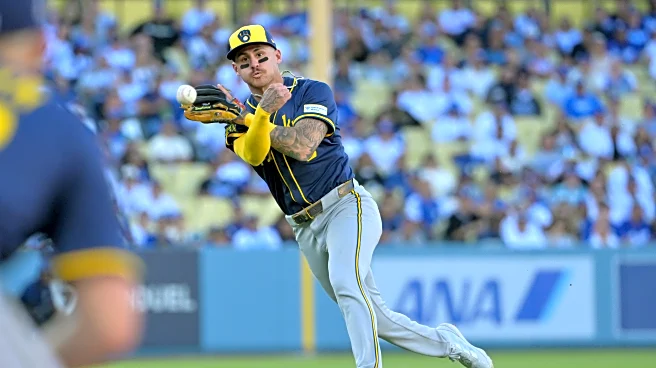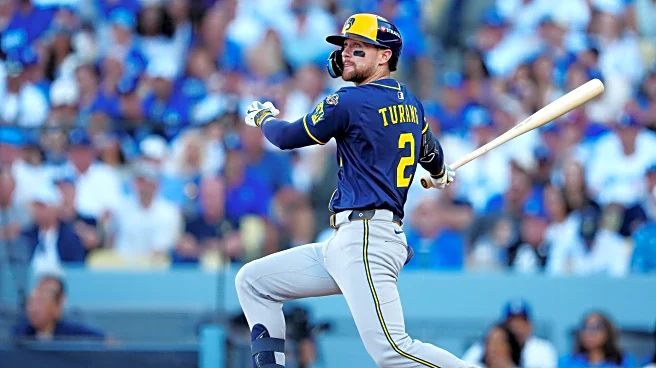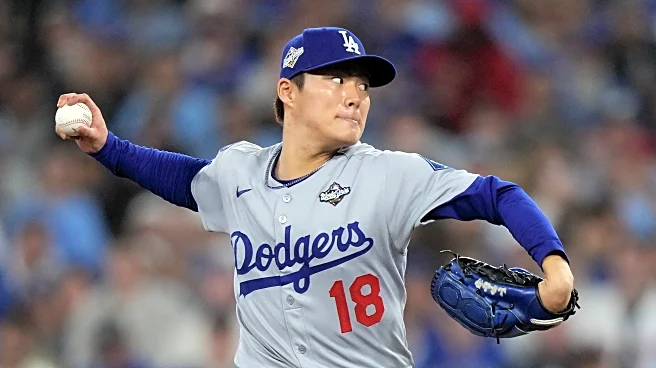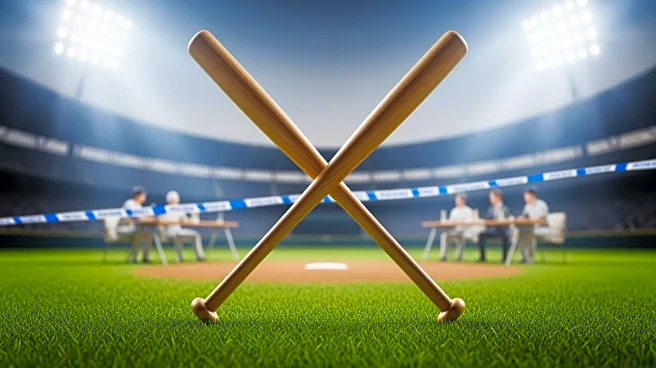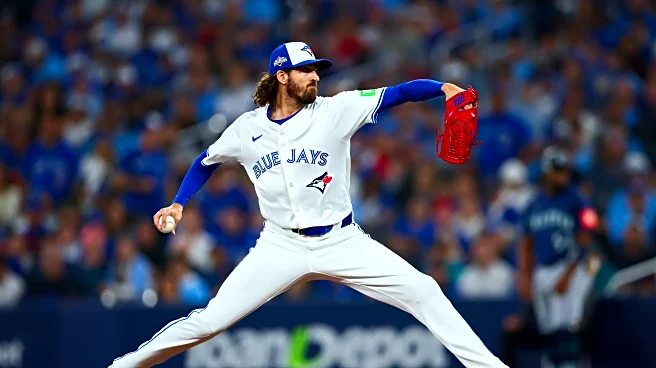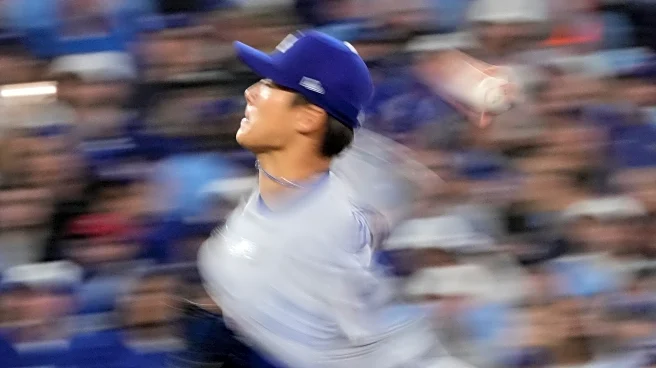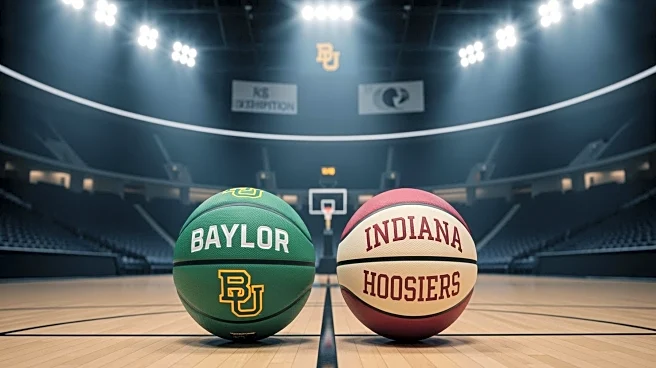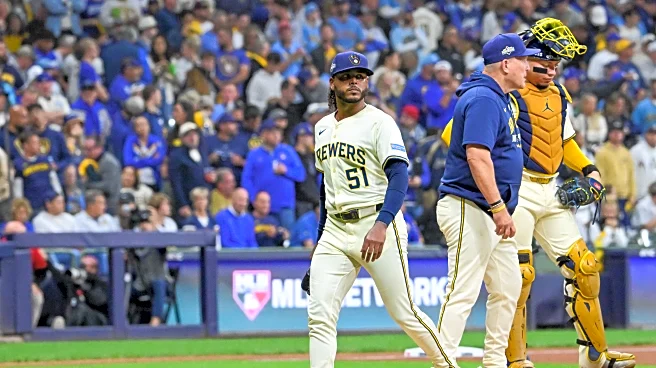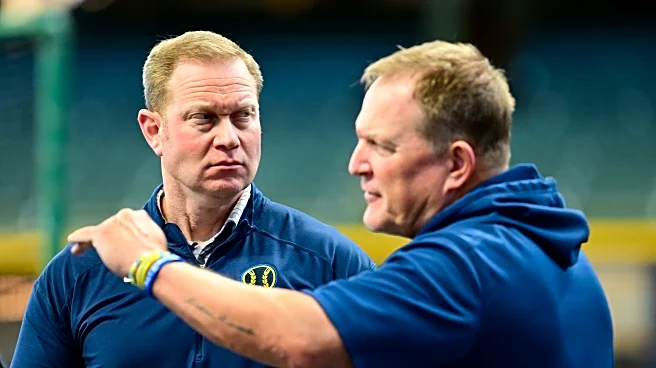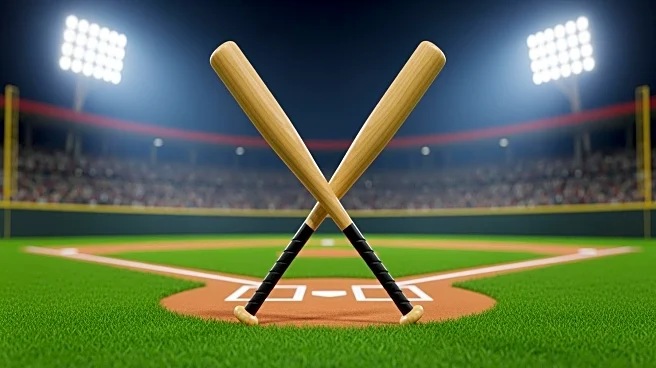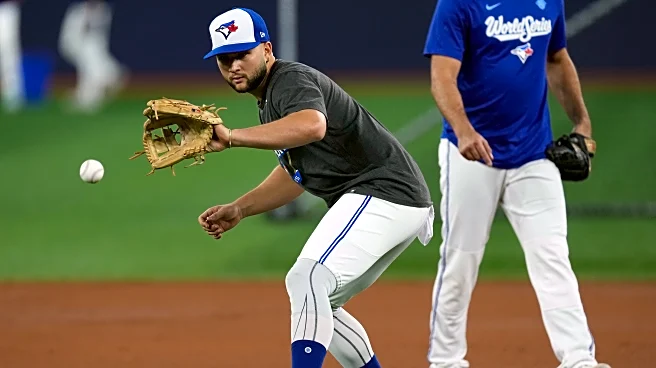As the Milwaukee Brewers’ season retreats further into the rearview mirror, we are naturally starting to think about the offseason, which will begin in earnest at the Winter Meetings the week of December
7. The Brewers should have money to spend this offseason, and they certainly have the chips to make a trade if they so choose, but where on the roster would a new addition make sense? Let’s do a quick run-through of each position with that in mind.
Catcher
The Brewers have two years of control remaining on William Contreras; the first is a certain-to-be-exercised $12 million club option as part of a two-year deal he signed before last season, and the second would be his final arbitration season. Contreras is one of the best catchers in baseball and arguably the heart and soul of this version of the Brewers, and he doesn’t turn 28 until Christmas Eve.
Jeferson Quero has been a top 100 prospect each of the last two seasons, and he is the most advanced of the Brewers’ top position-player prospects, as he just turned 23 and spent 2025 at Triple-A Nashville. Based on how the Brewers have treated their top prospects in the past, I would not expect Quero to be on the major league team to start the season — the Brewers, understandably, value the extra year of service they can get if they hold him back for a few weeks, and Quero is unlikely to be a Rookie of the Year candidate if he’s backing up Contreras.* But I do expect we’ll see Quero in the big leagues at some point in 2026.
*Remember that under new “Prospect Promotion Incentive” rules, if a player accrues a full year of service with the big-league club and wins Rookie of the Year or places top three in MVP or Cy Young, the team is rewarded with a pick after the first round. Hypothetically, this incentivizes teams to break camp with their best prospects rather than hold them back until they can’t accrue a year of service time. For Quero to net the Brewers a PPI pick, he’d need to accrue a full year of service time next season and either win Rookie of the Year in 2026 or finish in the top three in MVP voting before 2029.
That does leave a question, though, of who the Brewers’ backup catcher will be to start the season. Danny Jansen has a $12 million mutual option, which I do not expect the Brewers will pick up, and he may command a larger price as a free agent than the Brewers want to pay for a backup. Eric Haase was designated for assignment after the trade deadline acquisition of Jansen, but he remained in the organization and finished the season at Nashville; he could be brought back on a small deal. No other catcher spent time on Milwaukee’s 40-man roster in 2025, unless you count Anthony Seigler, a part-time catcher who I suspect would not be viewed as an option there at the major league level. (Seigler caught one inning for the Brewers in 2025; he entered in the ninth when Milwaukee was ahead of the Nationals 16-4. Washington scored five runs in the ninth, which probably isn’t related.)
With Contreras here for at least another year or two and Quero behind him, the Brewers look set at catcher for at least a couple of years.
First Base
With Rhys Hoskins coming off the books (he has an $18 million mutual option which the Brewers are certain to decline, and they’ll have to pay him a $4 million buyout), the Brewers have the option of bringing back the two men who finished the 2025 season as their first basemen: Andrew Vaughn and Jake Bauers.
The decision on Vaughn seems like a no-brainer, but he’s not going to be particularly cheap in arbitration; he made $5.85 million in 2025 and projects around $7.5 million for 2026. That’s a lot, but it’s difficult to see where the Brewers could get a viable option that’s any cheaper than that, so I expect they will tender Vaughn a contract. This will be Vaughn’s third arbitration year, but he’s a super-two player, so the Brewers still have two years of control if they choose to use them.
Bauers was non-tendered last season and signed a minor league deal with the Brewers, but he’s back in arbitration after making the team last year. Bauers looked great down the stretch, Pat Murphy seems to like him, and he gives the Brewers not only a platoon option with some power at first base but some versatility (he’s a plus defender at first and a usable one in left field). He won’t be especially expensive, either: Spotrac projects his 2026 salary at $1.75 million. That seems very reasonable for a player like Bauers.
I’m not going to say that there’s no chance that the Brewers could make a splashy move for a first baseman and let one or both of Vaughn and Bauers walk, but I do not think that’s going to happen. I strongly suspect that Milwaukee will start 2026 with Vaughn as their primary option and Bauers as a platoon option.
Second Base
Brice Turang is the present and future for the Brewers at second base — unless he’s moved to shortstop. He is probably already the best primary second baseman in team history, and he’s not yet 26. He’s due for a bit of a raise in 2026 in his first year of arbitration, but he won’t become a free agent until after the 2029 season.
Third Base
Caleb Durbin just finished his first major league season and proved entirely capable of manning third base in 2026 and beyond, and I’d expect him there unless the Brewers acquire a third baseman, reshuffle their infield, and move Turang to shortstop and Durbin to second. Anthony Seigler is also someone who spent significant time in the majors in 2025, and while the results weren’t really there, he and Andruw Monasterio will both be utility options for the Brewers.
Shortstop
Here is where we have much more of a question. Joey Ortiz had a very encouraging season in 2024 when he was the Brewers’ primary third baseman next to Willy Adames; he was about exactly league average at the plate and played solid defense. In 2025, he shifted over to shortstop, and while his defense held up well, his offense fell off a cliff, and he was one of the worst everyday offensive players in the league.
I suspect that the Brewers are not ready to give up on Ortiz. He was awful at the plate in 2025, but they’re probably hoping the increased defensive role (switching from third to short) affected his offense, and that he might bounce back closer to 2024 levels next season. And remember, Turang was also once one of the worst everyday offensive players in the league, and he and the Brewers turned that around. One area that could help: Ortiz’s bat speed fell from an average of 73.4 mph in 2024 (76th percentile) to 72.4 mph in 2025 (55th percentile). Ortiz has a borderline elite strikeout percentage (just 14.6%, 86th percentile), but if he isn’t ever doing damage, who cares if he doesn’t strike out? An offseason spent working on driving the ball, with the tradeoff of a few more strikeouts, could lead to improvement.
If nothing else, the club is likely eyeing Jesus Made as the potential opening day shortstop in 2027, so they might feel they can live with another year of good defense and bad offense from Ortiz while he keeps the seat warm for the team’s top prospect.
The only wildcard here: what if the Brewers decided to make a Godfather offer for, say, Gunnar Henderson? The Orioles probably wouldn’t even consider it, but Henderson starts getting expensive next season, and he wasn’t nearly as good in 2025 as he was the year before. Baltimore looks like they have a long way to go. This almost certainly won’t happen, but, hey, thinking outside the box.
Outfield
Jackson Chourio and Sal Frelick have two of the outfield positions on lockdown for the next several seasons, at least. But the third outfield spot is more of an open question. Garrett Mitchell could come into spring training healthy, he could play great, and he could have an excellent season as the Brewers’ everyday center fielder… but at this point, given Mitchell’s injury history, I don’t think there’s any way the team is counting on that, and we as fans shouldn’t, either. And don’t forget: Mitchell did not play well in 25 games before a shoulder injury ended his 2025 season.
Christian Yelich’s days of playing the field are almost entirely behind him. He made only 18 starts in left field in 2025, and while he can do it in a pinch, the 2014 Gold Glover no longer rates very well as a fielder.
Blake Perkins doesn’t reach arbitration until after next season. He’s a good player and an excellent piece for a good team, but do the Brewers want him to be an everyday outfielder? His offensive shortcomings were glaringly obvious in the postseason, and he’s better suited to being one of the best fourth outfielders in the game.
Is Isaac Collins the answer? I’m not sure. Collins was one of the great stories of the 2025 Brewers, but from August 12 until the end of the season, he hit .182/.303/.293 in 120 plate appearances across 33 games, and he was 0-for-9 with seven strikeouts in the postseason. Maybe Collins finds his mid-summer form again, but we have to consider the possibility that he — a ninth-round draft pick who got cut from the Rockies before having a breakout season with the Brewers during a rookie season in which he turned 28 years old — sort of lucked into a hot streak and once the scouting report was out, he struggled badly. It happens. The truth here is probably somewhere in the middle: I don’t know that he’s an everyday outfielder, but I also don’t think he’s a bad player.
They’d need to make room, but the outfield could be a place where the Brewers try to upgrade. They could add a center fielder with a better bat than Perkins, or they could add a corner outfielder and shift Chourio to center, where he played 89 times in 2025. Chourio isn’t the defensive center fielder that Perkins is, but he held his own out there (Fangraphs’ defensive value had him as a better center fielder than left fielder in 2025), and he’ll probably get better with more experience.
Designated Hitter
Expect Yelich, who made 128 starts at designated hitter in 2025, to continue getting most of the work here. It’s possible that the Brewers might work more of a lefty-righty platoon, and they could combine some of that DH work with Contreras; this would also be a way to get Quero more reps behind the plate if he is indeed on the team in 2026. Not only would that help ease Quero into the majors, but it would reduce the wear on Contreras, who catches as much as anyone in the league, and Yelich would not only get more maintenance days but he’d also avoid lefties, against whom he hit just .242/.316/.344 this season (compared to .274/.356/.504 against righties).
Starting Rotation
This is a “wait and see” situation. Once we have some clarity on whether Freddy Peralta (who has one year remaining before free agency) and/or Brandon Woodruff (who has a $20 million mutual option with a $10 million buyout and is reportedly looking for something in the range of three years and $75 million) will be returning, we can revisit this category. Milwaukee has a bunch of young options for the rotation, including Quinn Priester, Jacob Misiorowski, Chad Patrick, Robert Gasser, Logan Henderson, and Tobias Myers, and I wouldn’t be surprised if they gave Aaron Ashby and DL Hall, who’ve almost exclusively relieved as Brewers, a chance to start in spring training.
That group has a lot of potential but is very short on experience; if both Peralta and Woodruff return, I think the Brewers will be pretty well set in the rotation. If only one of them does, they might still be comfortable, but they could also go shopping for a cheap veteran type like Jose Quintana (or even Quintana himself, who has a $15 million mutual option that will certainly be turned down by the Brewers).
Bullpen
The Brewers frequently take fliers on cheap bullpen arms, and I’d expect them to do that again before next season, like they did with Grant Anderson before 2025. They’ve already made one move, a waiver claim on 27-year-old lefty Sammy Peralta, who has made 30 career appearances in the big leagues across the last three seasons with the White Sox and Angels.
But with Trevor Megill under team control for two more seasons and Jared Koenig and Abner Uribe not even arbitration-eligible yet, the bullpen doesn’t need any major work.
Conclusion
If the problem is the offense, which is certainly what the problem was in the NLCS, the most obvious places to upgrade would be at shortstop and in one of the outfield positions. Sometime soon, we’ll look at who could be potential targets, both in free agency and on the trading block.
